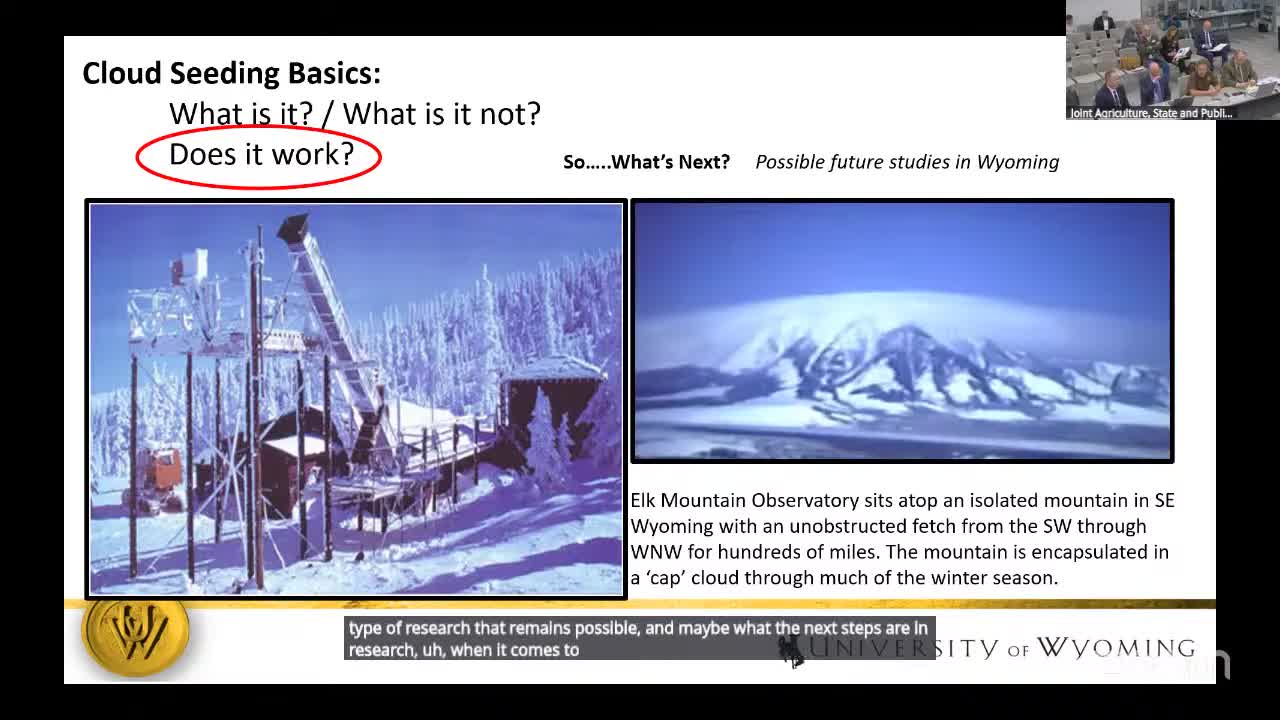
This article was created by AI using a video recording of the meeting. It summarizes the key points discussed, but for full details and context, please refer to the video of the full meeting. Link to Full Meeting
During a recent meeting of the Wyoming Legislature's Joint Agriculture, State and Public Lands & Water Resources Committee, officials discussed the potential of utilizing the mountaintop observatory alongside advanced research aircraft and supercomputing resources to refine predictive models for cloud behavior. This interdisciplinary approach could lead to significant advancements in weather modification techniques.
However, the outlook for cloud seeding operations in Wyoming faces challenges. The 2025 legislative session resulted in the elimination of state funding for both ground and airborne cloud seeding programs, halting aerial operations over key mountain ranges. Ground-based seeding will continue, but only if fully funded by external sources, such as Colorado River water users. Currently, 13 ground-based generators are operational, primarily in the Wind River and Sierra Madre ranges, with a dedicated meteorologist overseeing 24/7 operations from November to April.
Despite the funding hurdles, the cloud seeding program is seen as a vital component of a broader strategy to augment water flow in the stressed Colorado River Basin. The collaborative effort among seven basin states aims to address ongoing water shortages, with Wyoming poised to play a crucial role in this initiative.
As the University of Wyoming prepares to embark on its renewed research efforts, the implications for water resource management in the region could be profound, potentially leading to enhanced precipitation and better water availability for communities reliant on the Colorado River.
Converted from Joint Agriculture, State and Public Lands & Water Resources, August 28, 2025 - PM meeting on August 29, 2025
Link to Full Meeting
Comments
View full meeting
This article is based on a recent meeting—watch the full video and explore the complete transcript for deeper insights into the discussion.
View full meeting